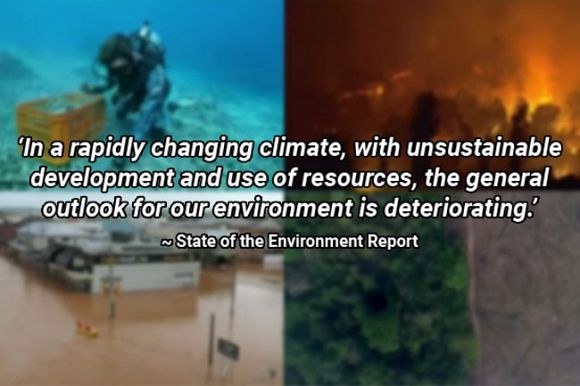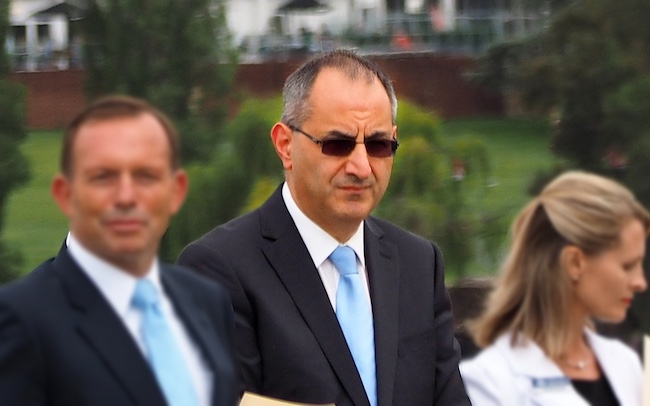Efforts should be made to prevent the extinction of species rather than playing God and trying to bring them back, writes Dr Binoy Kampmark.
HERE WE GO AGAIN, playing God and toying with Promethean fire. Having done a comprehensively brutal job of killing off the thylacine, known in popular parlance as the Tasmanian tiger, along with a growing number of other species, there is interest in reviving and ultimately returning them to the wild. And, as with any deity, the choice resides in the god figure, all-deciding and omniscient. The killer becomes the chooser, the executioner, the salvager.
Interest in this venture was piqued and spurred by a $5 million donation from a philanthropist to a research team engaged in a partnership with the spookily named Texas biotech company, Colossal Biosciences. The research team in question is located at the University of Melbourne’s TIGRR Lab (Thylacine Integrated Genetic Restoration Research).
Axel Newton, an evolutionary biologist working at the lab, is filled with messianic purpose:
‘I think we have an obligation to do everything in our power to bring back this remarkable animal, particularly as our forebearers [sic] were the direct cause of its disappearance.’
In the 1970s, San Diego’s Frozen Zoo gave us the God-appraised concept that came to be known as de-extinction. The website notes the project as ‘the largest and most diverse collection of its kind in the world’, containing ‘over 10,000 living cell cultures, oocytes, sperm and embryos representing nearly 1,000 taxa, including one extinct species, the po’ouli’.
The popular culture of resurrecting species received a global, enchanting boost with the first of the Jurassic Park films in 1993. The central tenets of the field – technological hubris, entrepreneurial greed and ecological fiddling – remain very much in vogue.
Three years later, Dolly the sheep made her cloned appearance, the product of DNA taken from the mammary gland of an adult Finn Dorset ewe. In 2008, a dead mouse frozen at -20 degrees centigrade for 16 years was cloned, raising hopes, observed the New Scientist, ‘of one day being able to resurrect extinct animals frozen in permafrost, such as the woolly mammoth’. The following year, the extinct bucardo (Capra pyrenaica pyrenaica), a wild goat species otherwise known as the Pyrenean ibex, also received the cloning treatment.
This is not without huge problems. Playing with and editing nature in this way is not merely animating (or reanimating) Jurassic Park and drawing in capital for entertainment. It raises further issues of interference with the ecosystem that human beings have proved entirely inadequate at handling. Far from restoring balance to a world out of kilter, such pursuits threaten to exacerbate instability.
The very term seems to invite trouble. De-extinction cloaks the analysts with ecological dispensation, the wise given full rein in terms of planning, decision making and determination. In the venture, other species are sidelined before the supposed sagacity of funding bodies and scientists.
In time, should the technology and funding be of such a scale, the only species in town able to do this – Homo sapiens – will be able to further distort and twist an environment it has done a splendid job of ruining. Favoured species from a financial, economic, industrial or selfish perspective will be selected, or perhaps de-selected; others will remain untouched.
The academic literature on this subject shows some awareness of the problems, though not much of this seems to bother the main palaeontologist who was consulted for the Jurassic Park movie franchise. In an interview given in 2015, Jack Horner refers to a project discussing the creation of a dinosaur-snout-shaped beak in a chicken embryo.
He said:
“It’s a terrific concept, right? I don’t care how we make a dino-chicken, or how we bring back dinosaurs, I don’t care who does it, I just want to see it done.”
Others are not quite so cavalier in their enthusiasm, niggled by the problematic issues such an enterprise entails. ‘De-extinction entangles us within complex ethical and speculative territory,’ a co-authored piece in Studies in Ecocriticism claims. There are ‘technical, ethical and ecological challenges,’ argues Corey J A Bradshaw of Flinders University.
A number of criticisms have been cited against such projects. In a spatial context, the resurrected species would have to encounter a dramatically altered environment. In the decade since 2010, the global net loss of forests was registered at 4.7 million hectares. The UN Food and Agricultural Organisation, however, puts the overall deforestation rate at roughly 10 million hectares each year.
Fine as it is to imagine a world repopulated with its sabre-tooth cats, mammoths, and thylacines, the environment must itself be sufficiently adapted to receive them.
From the accountancy perspective, such programs are very dear for a meagre outcome: a few animals, as opposed to a sustainably large number of that species. Instead of focusing on the god-like projects of de-extinction, why not focus on arresting the extinction process in the first place?
A 2017 study, looking at ‘potential de-extinction candidate species’ from the state of New South Wales and New Zealand proved fairly damning about the process. Even given that such “resurrection” projects might receive external sponsorship and that costs could be shared ‘with extant analogue species’, the pool of public funding for conservation of such species ‘would lead to fewer extant species that could be conserved, suggesting net biodiversity loss’.
This less than ringing endorsement suggests that other strategies should be considered, be there in managing and removing invasive species (itself problematic), implementing breeding and reintroduction programs of threatened species, and purchasing land for reasons of preserving ecosystems.
None of these alternatives will deter the cashed-up entrepreneurs and opportunistic scientists keen to meddle with the world’s ecology, something humans have done since they set foot on this planet.
Dr Binoy Kampmark was a Cambridge Scholar and is a lecturer at RMIT University. You can follow Dr Kampmark on Twitter @BKampmark.
Related Articles
- Extinction Rebellion — why I got arrested
- A message to our Government: Now is the time for decisive climate action
 This work is licensed under a Creative Commons Attribution-NonCommercial-NoDerivs 3.0 Australia License
This work is licensed under a Creative Commons Attribution-NonCommercial-NoDerivs 3.0 Australia License
Support independent journalism Subscribe to IA.















